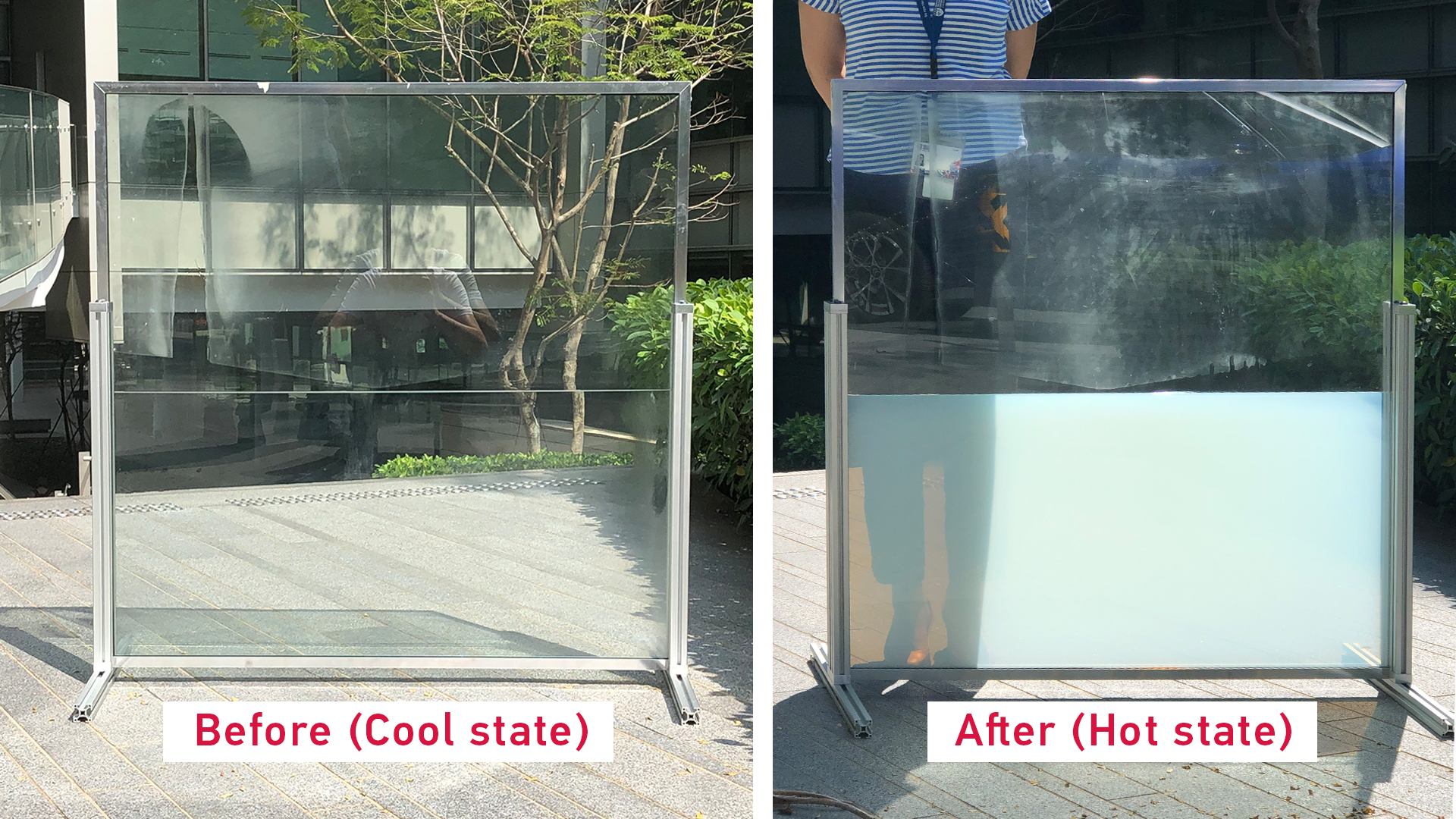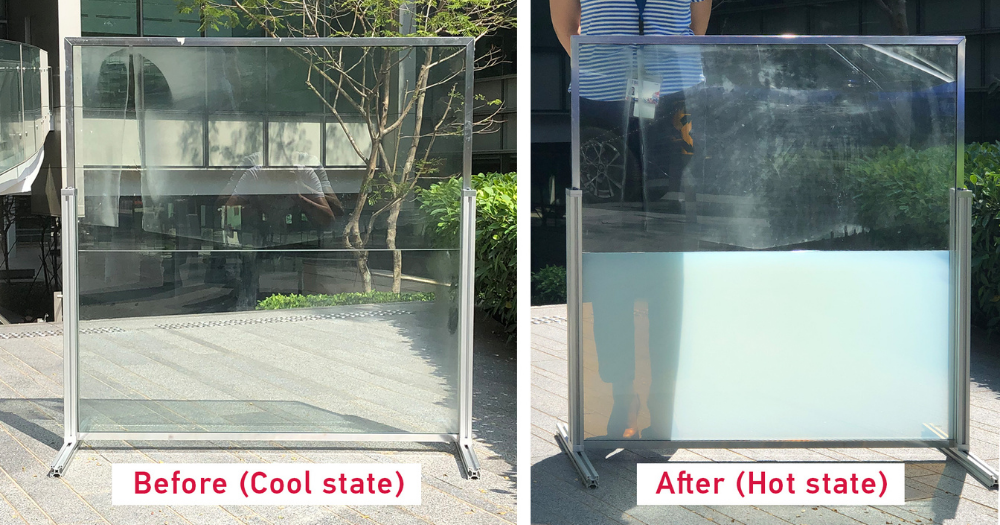Windows are the least energy-efficient feature in buildings.
To reduce the need for air-conditioning which is energy-intensive, scientists from the Nanyang Technological University (NTU) have developed a unique energy-saving window made out of liquid.
Windows make the room warmer
Heat is easily transferred through the glass, as compared to walls and concrete.
In tropical climates like Singapore, this causes heat to be transferred to the interior, resulting in more energy being pumped in for air-conditioning to cool the building down.
According to a 2009 United Nations report, buildings account for 40 per cent of global energy usage — windows are responsible for half of this energy consumption.
Energy-saving "liquid window"
Dubbed a "liquid window", the window invented by the NTU scientists comprises hydrogel-based liquid trapped between two glass panels.
The use of the liquid in place of conventional glass enables it to reduce up to 45 per cent of energy consumption in buildings, according to simulations conducted.
It is also 30 per cent more energy-efficient than conventional energy-efficient glasses (glass coated in a special glazing to reflect heat while still letting sunlight through).
The liquid window, which is made out of a mixture of micro-hydrogel, water and a stabiliser, is also cheaper to make as the coatings for typical glass energy-saving windows are more expensive.
NTU researchers thus turned to water instead of glass as the former can absorb large amounts of heat before getting hot.
Water also allows a large amount of energy to be stored, instead of letting it be transferred through the glass and into the building.
This accumulated heat will then be released when it is cooler at night.
 Photo from NTU
Photo from NTU
Could help reduce electricity costs
Not only can the liquid window help reduce energy consumption, they are able to respond to changes in temperature.
When exposed to higher temperatures outdoors, the window turns opaque, thus blocking sunlight. When the temperature becomes cooler, the window returns to its original, clearer state.
For example, on cloudy or rainy days, the window will remain clear. On particularly hot days, the window will turn opaque faster.
 Photo from NTU
Photo from NTU
 Gif from NTUsg / YouTube
Gif from NTUsg / YouTube
Outdoor tests conducted in Singapore showed that the liquid window had a considerably lower temperature during the hottest time of the day at noon, 50°C. Meanwhile, glass windows had a temperature of 84°C at the same time.
Scientists also measured at what time did the window have the highest value of stored thermal energy.
In normal glass windows, this temperature peak occurs at around 12pm, when the sun is at its highest.
However, the temperature peak was shifted to 2pm for the liquid windows.
This shift in time could potentially result in lower energy tariff charges for users, as the electricity load peak is shifted as well.
The liquid window also reduces noise 15 per cent more effectively than sound-blocking double-glazed windows.
Better for offices
As the liquid window turns opaque for several hours during the day, it is still best suited for office buildings instead of residential ones, lead author of the research study, Long Yi, said.
This is because those in residential buildings would ideally want a nice, unobscured view out of their homes.
Currently, the team of researchers is collaborating with industry partners in the hopes of commercialising and scaling up their invention to be implemented in actual buildings.
Totally unrelated but follow and listen to our podcast here
Top photo from NTU
If you like what you read, follow us on Facebook, Instagram, Twitter and Telegram to get the latest updates.
